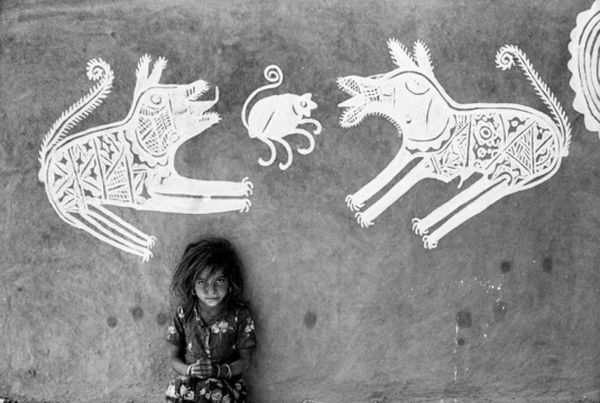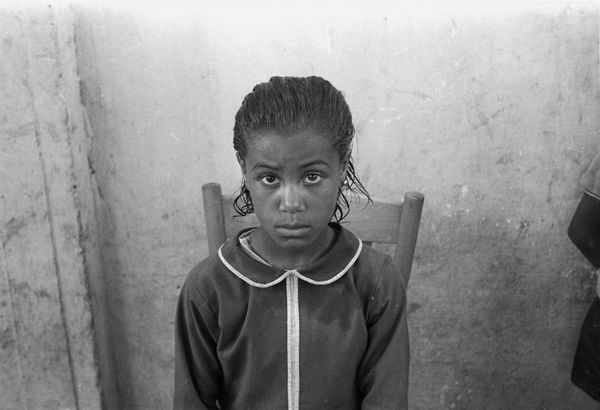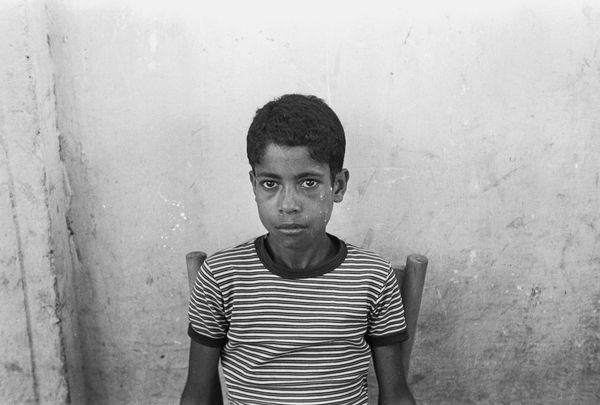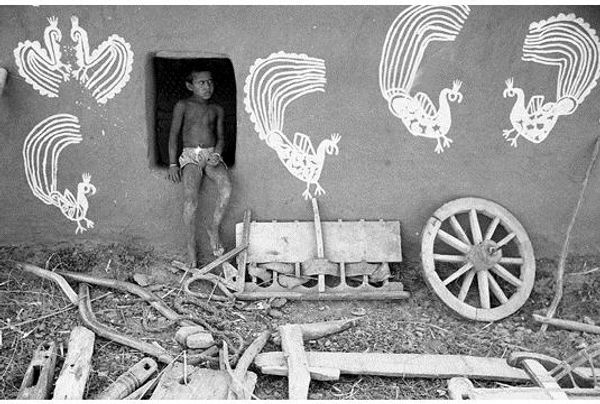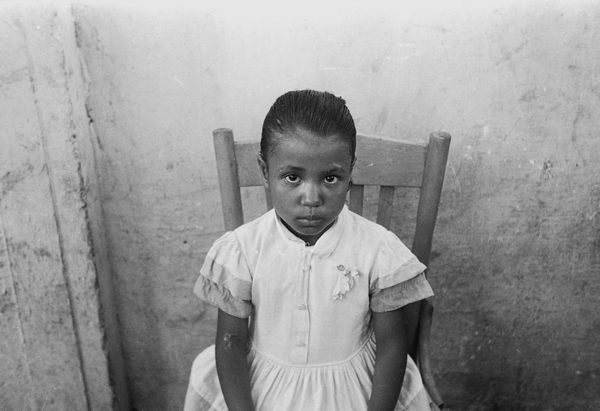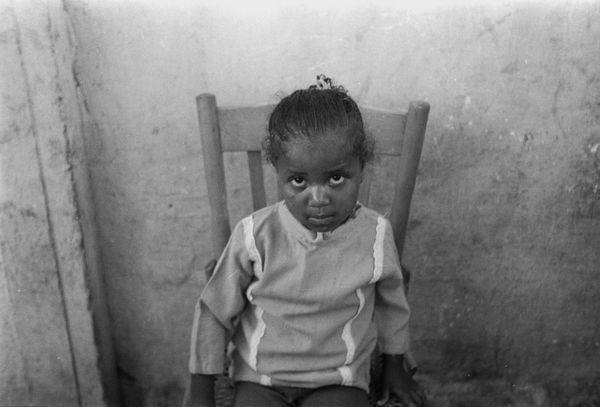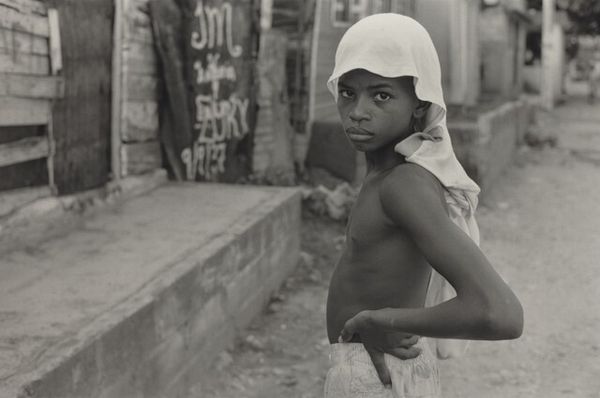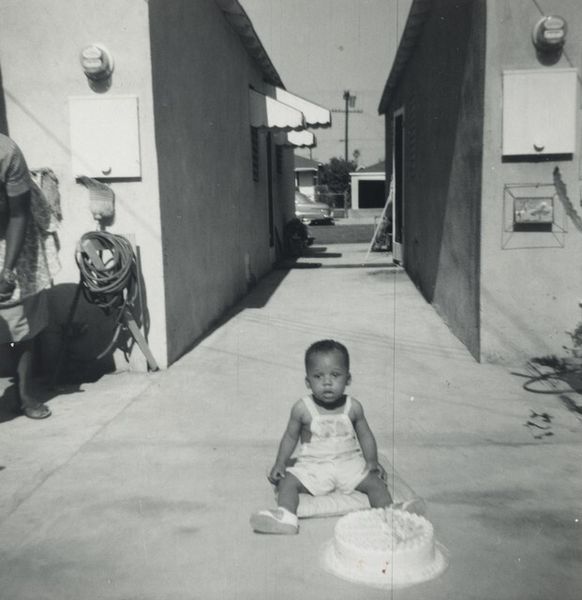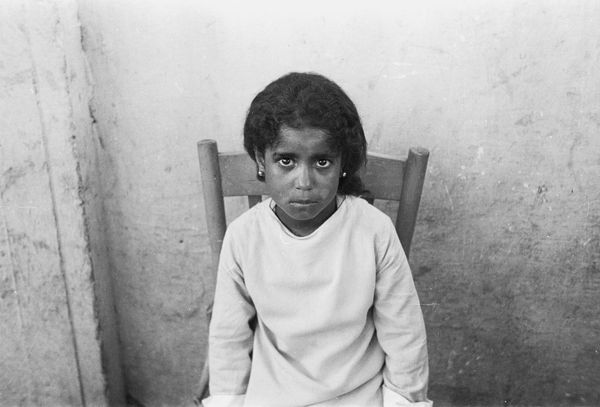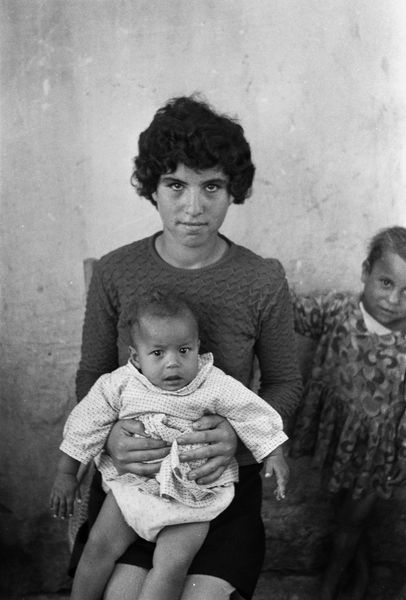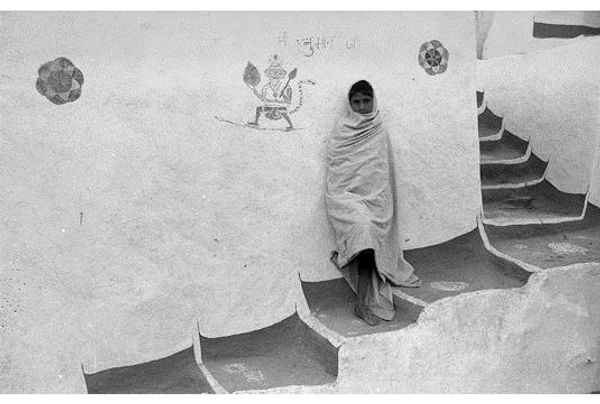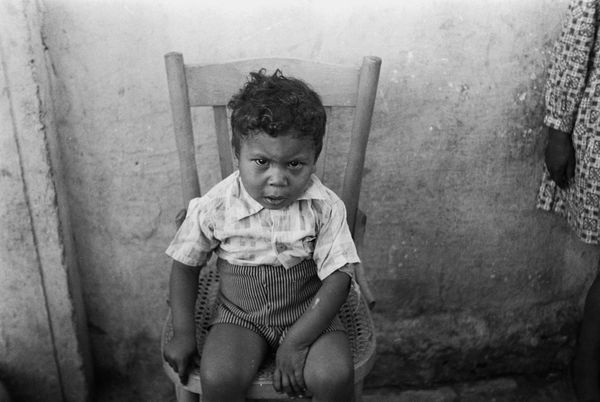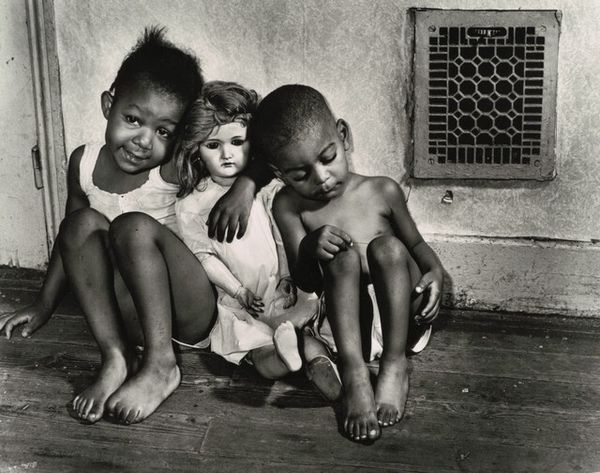
photography
#
portrait
#
african-art
#
black and white photography
#
social-realism
#
street-photography
#
photography
#
folk-art
#
black and white
#
monochrome photography
#
street photography
#
monochrome
Copyright: Jyoti Bhatt,Fair Use
Editor: Here we have Jyoti Bhatt’s “A child in Santiniketan, Birbhum, West Bengal,” from 1978. It’s a black and white photograph, and there's something so compelling about the contrast and the way it captures this child against a backdrop of folk art. What draws your eye when you look at this? Curator: My focus goes immediately to the layering of production evident here. We see Bhatt’s photographic process capturing folk art, the painted elephants and architecture, on what appears to be a dwelling's exterior. It becomes a documentation of artistic creation across different means of production. Who made those wall paintings? What were their materials? Their place in society? Editor: That's fascinating. I hadn't really considered the other artists involved, only the photographer. Do you think Bhatt was making a statement about art's accessibility by photographing these very public artworks? Curator: It's certainly a strong possibility. Think about the materiality of photography itself – the film, the darkroom chemicals, the printing process. By using this medium to document ephemeral folk art, Bhatt is engaging with the preservation, or even commodification, of these cultural expressions. The photograph becomes a portable object, a form of cultural capital. What do you make of the child's gaze within all of this artistic layering? Editor: It's complicated. There’s something so direct and unyielding about it, and then you realize they’re also framed *by* all of these representations. It makes you think about the person's position in the world in relation to the work they do. Curator: Precisely. It pushes us to question the boundaries between art, craft, labor, and the social realities of those who engage in these processes. Editor: This photo really challenges how we traditionally define art, and it’s made me realize how important it is to consider the lives and circumstances of the artists involved. Curator: Yes, by investigating the layers of production and consumption in art, we begin to acknowledge these contributions of often unseen labor.
Comments
No comments
Be the first to comment and join the conversation on the ultimate creative platform.
